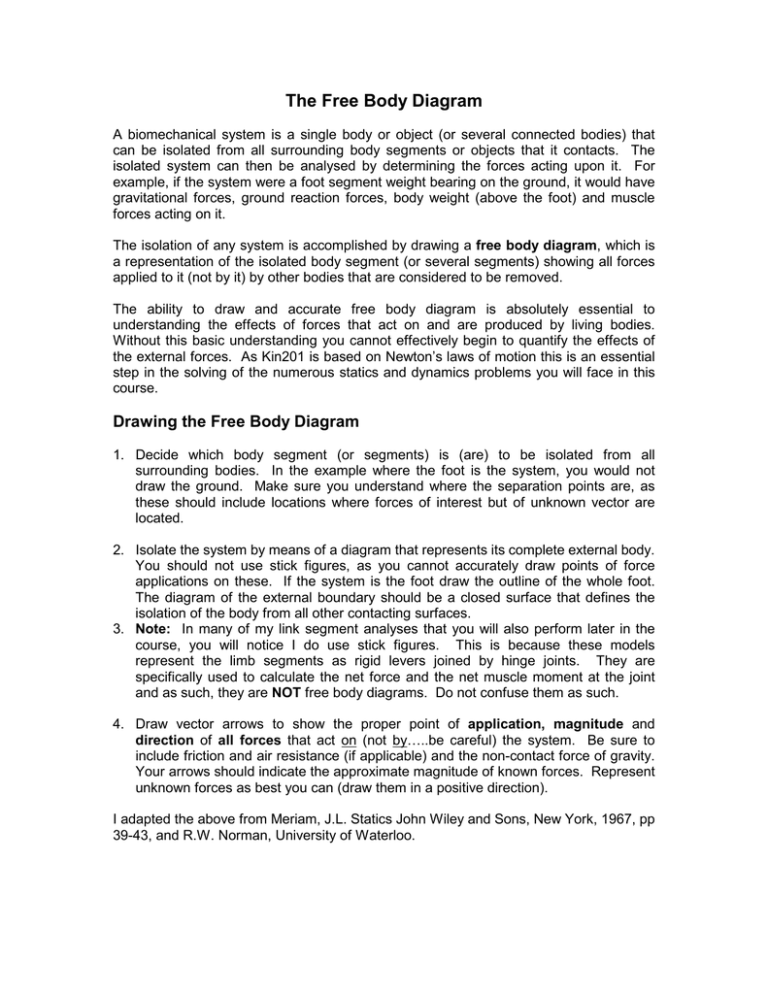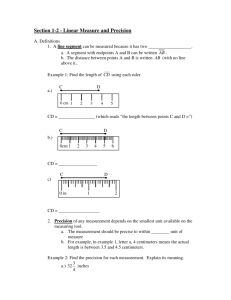The Free Body Diagram
advertisement

The Free Body Diagram A biomechanical system is a single body or object (or several connected bodies) that can be isolated from all surrounding body segments or objects that it contacts. The isolated system can then be analysed by determining the forces acting upon it. For example, if the system were a foot segment weight bearing on the ground, it would have gravitational forces, ground reaction forces, body weight (above the foot) and muscle forces acting on it. The isolation of any system is accomplished by drawing a free body diagram, which is a representation of the isolated body segment (or several segments) showing all forces applied to it (not by it) by other bodies that are considered to be removed. The ability to draw and accurate free body diagram is absolutely essential to understanding the effects of forces that act on and are produced by living bodies. Without this basic understanding you cannot effectively begin to quantify the effects of the external forces. As Kin201 is based on Newton’s laws of motion this is an essential step in the solving of the numerous statics and dynamics problems you will face in this course. Drawing the Free Body Diagram 1. Decide which body segment (or segments) is (are) to be isolated from all surrounding bodies. In the example where the foot is the system, you would not draw the ground. Make sure you understand where the separation points are, as these should include locations where forces of interest but of unknown vector are located. 2. Isolate the system by means of a diagram that represents its complete external body. You should not use stick figures, as you cannot accurately draw points of force applications on these. If the system is the foot draw the outline of the whole foot. The diagram of the external boundary should be a closed surface that defines the isolation of the body from all other contacting surfaces. 3. Note: In many of my link segment analyses that you will also perform later in the course, you will notice I do use stick figures. This is because these models represent the limb segments as rigid levers joined by hinge joints. They are specifically used to calculate the net force and the net muscle moment at the joint and as such, they are NOT free body diagrams. Do not confuse them as such. 4. Draw vector arrows to show the proper point of application, magnitude and direction of all forces that act on (not by…..be careful) the system. Be sure to include friction and air resistance (if applicable) and the non-contact force of gravity. Your arrows should indicate the approximate magnitude of known forces. Represent unknown forces as best you can (draw them in a positive direction). I adapted the above from Meriam, J.L. Statics John Wiley and Sons, New York, 1967, pp 39-43, and R.W. Norman, University of Waterloo.









